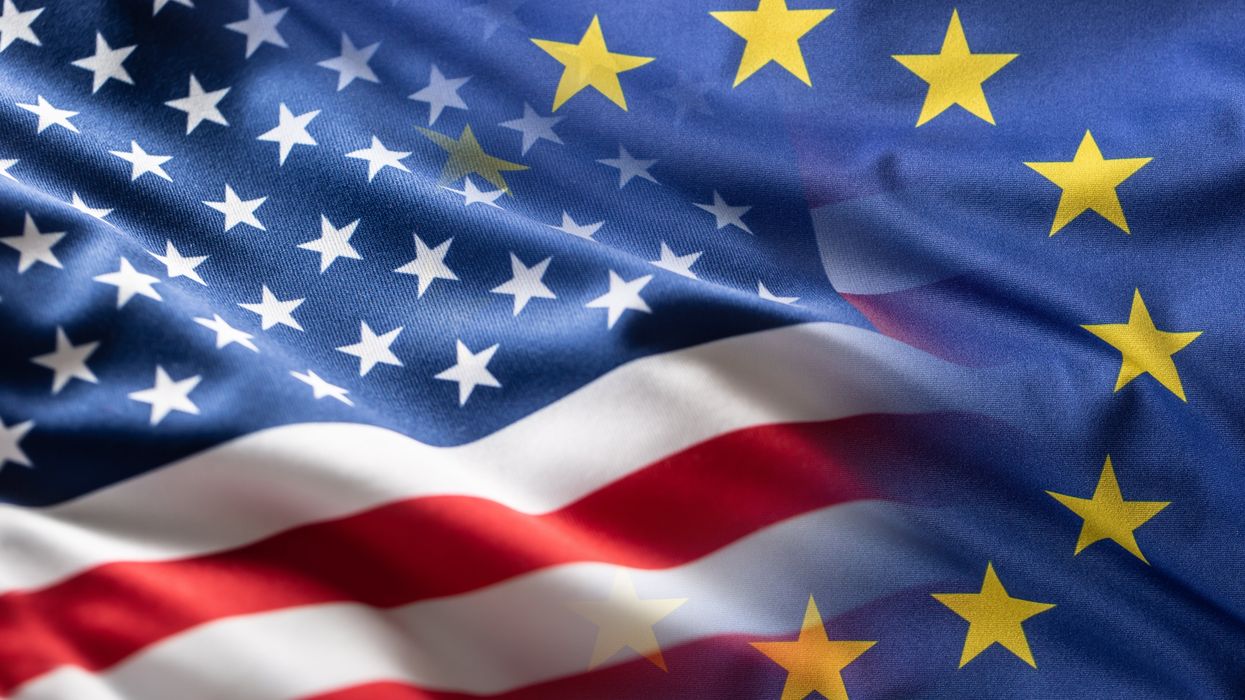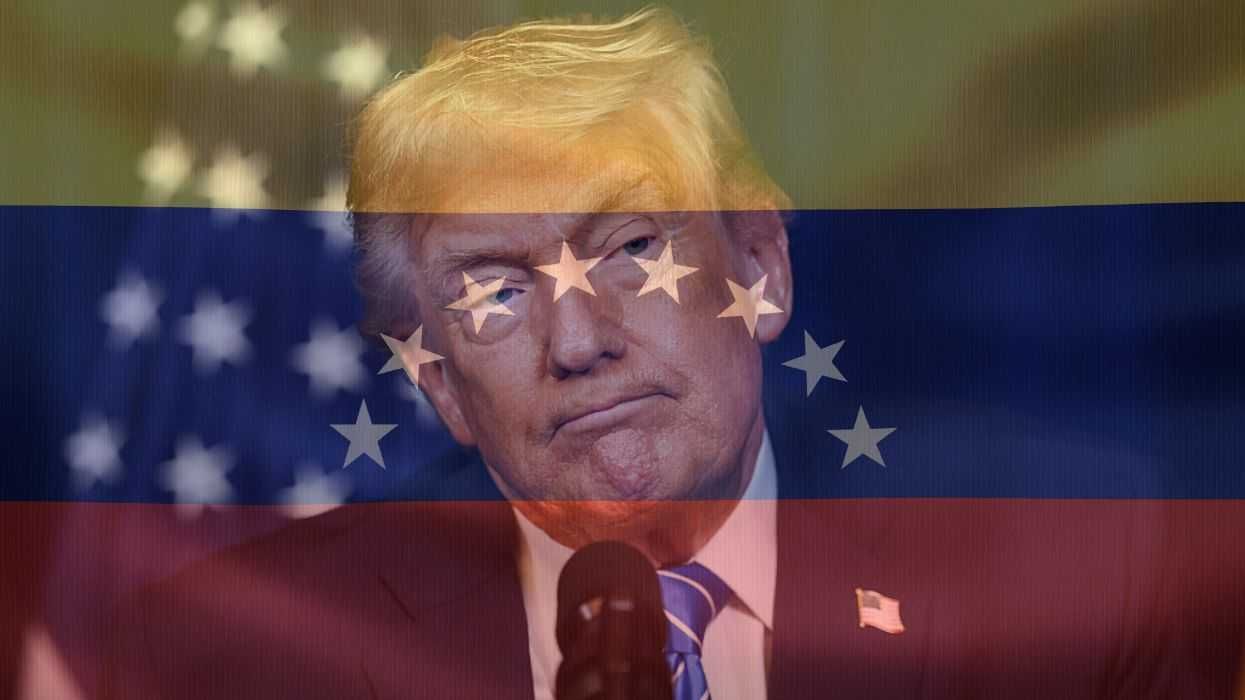Sheehan Zaino is a professor of political science and international studies at Iona University, Bloomberg political contributor and senior democracy fellow at the Center for the Study of the Presidency & Congress.
On March 4, 1801, Thomas Jefferson was sworn in as the nation’s third president and gave what has become a legendary address. Jefferson’s First Inaugural is often remembered for its placating tone and infamous line, “we are all Republicans, we are all Federalists.” The speech was so conciliatory that even committed Federalist and vocal opponent John Marshall was pacified by his estranged cousins’ words.
Marshall was not alone; similar statements of begrudging approval came from everyone from George Cabot to Alexander Hamilton.
This sentiment is in keeping with how the address has been remembered: a temperate, nonpartisan statement of conciliation. But it was also something else: a strategic decision by one of the most pragmatic, enigmatic and effective presidents to manage the complexities of executive authority in a separated system. It is this hidden side of Jefferson that presidents from Woodrow Wilson to Franklin Roosevelt endeavored to emulate. And it was this Jefferson — not the idealized, grassroots, individualist, small-government proponent — whom his arch-enemy Hamilton aptly described as “temporizing” and calculating.
I mention this because last month while traveling in Europe I got several questions about Project 2025 from people who admittedly hadn’t read the Heritage Foundation’s “ Mandate for Leadership: The Conservative Promise ” (and at 900-plus pages, who can blame them?). Like many of us across the pond, they were curious about the document, which they have heard so much about. They wondered, what is all the hype about? Is the on- and offline concern, fear and freak-out warranted?
I prefer to sidestep that question, if only because whatever the answer, it isn’t productive. Rather than contribute to the hysteria and frenzy (whether justified or not), I counsel viewing Project 2025 as a gift that — if taken seriously, examined, understood and used correctly — offers Democrats an opportunity.
For what is by some counts the ninth time since 1981, the Heritage Foundation and its affiliated groups have committed their “vision” to writing. In doing so, they have laid their cards on the table for the world to see and — given this 30-chapter behemoth was pieced together by “hundreds of contributors” with input from more than “400 scholars and policy experts” — the tensions and contradictions you’d expect abound. How could they not?
This is why I started with Jefferson and why so many others have looked to him as well. For all his warts — and there were plenty — Jefferson knew how to make Madisonian government work in a way even his close friend, the Father of the Constitution and our fourth president, could not.
Part of Jefferson’s shrewd approach, often confused with conciliation, was actually cooptation. Jefferson, who was described by his Federalist opponents in the most vile terms, in ways that would make even hard-hearted election watchers blush today, did not come to office and suddenly decide he wanted to work with those who had accused him of every horrific crime and immorality. Instead, he understood that to govern he had to grow the size of his majority by absorbing members of the opposition faction who were absorbable (the moderates) and, by extension, isolating the remaining radicals.
Instead of bipartisanship, he was engaged in depletion of the enemy by cooptation. As James MacGregor Burns writes: “Jefferson had no desire to work with the Federalists, rather he hoped and expected that the Federalist Party would die … [h]e had far bolder strategy … he would seek to draw moderate Federalists away from their conservative, ‘monarchical’ leader.”
At minimum, employing this strategy requires understanding the divides in your opponent’s coalition. This is what Project 2025 provides: a multitude of areas in which there is a division that can be exploited.
Case in point, in chapter on the Department of State, Kiron K. Skinner takes readers on a trip around the world, one that she agrees with her co-authors is “on fire.” “Not every country or issue,” she cautions “can be discussed” (interesting given the report comes in at 920 pages). Instead, she chooses to focus on “examples of several areas in which a shift in U.S. foreign policy is not only important, but arguably existential.”
In a bit of refreshing self-reflection — and a useful cue to opponents — she underscores the lack of agreement among conservatives on some of these issues. “The point,” she writes, “is not to assert that everyone in the evolving conservative movement … will agree with the details of this assessment.” A point that becomes all too clear as you keep reading.
Included among the “five countries on which the next Administration should focus its attention and energy,” is an issue that “starkly divides conservatives” — the “Russia-Ukraine conflict.”
The interventionists view Russian aggression and invasion of its neighbor as a major challenge to “U.S. interests, as well as to peace, stability, and the post-Cold War security order.” They argue that the defeat of President Vladimir Putin and return of all Ukrainian land is essential. As a result, folks on that side of the divide are pushing for U.S. involvement in the region, continued support in the form of aid (military and economic), as well as use of NATO and U.S. troops if necessary.
On the other side are the isolationists, who do not see the war as a challenge to U.S. interests and argue that Europe, not the U.S., should aid in Ukraine’s defense. Moreover, they believe the war should be brought to a negotiated end quickly so the U.S. can refocus its attention in other areas (namely, China).
There is also, she tells us, a third approach. And while she does not mention vice presidential candidate J.D. Vance in this context, it allies closely with his notion of “client states.” As Vance wrote after the Munich Security Conference, “America does not need clients, it needs allies.” According to Vance, U.S. resources are limited and, as a result, well-to-do European nations should defend Ukraine so we can turn our attention to other more pressing matters. Skinner describes this “third way” as one in which “continued U.S. involvement must be fully paid for; limited to military aid (while European allies address Ukraine’s economic needs); and have a clearly defined national security strategy that does not risk American lives.”
Skinner then adds something that is not all that clear and seems to represent her best hope, rather than reality: “Regardless of viewpoints, all sides agree that Putin’s invasion of Ukraine is unjust and that the Ukrainian people have a right to defend their homeland.” I’m not sure this was made clear during Tucker Carlson’s recent sit-down with Putin or Viktor Orban’s tete-a-tete with Trump at Mar-a-Lago before the Republican National Convention.
Nevertheless, she concludes that all this conflict, division and confusion among U.S. conservatives as it pertains to the Ukraine-Russia war offers a “generational opportunity” to “bring resolution to the foreign policy tensions within the movement.”
I don’t know about that, but what it does do is provide Democrats an opportunity to exploit a long-simmering wedge issue on the right and, in so doing, to draw more moderate interventionists (and maybe even some moderate isolationists for whom the notion of client states is a bridge too far) to their side. A “Jefferson among us,” for instance, might be clever enough to take what is most compelling from the isolationists playbook and modify it a bit to appeal just enough to co-opt them.
The split on the Ukraine-Russia war is not the only contradiction in the document. A careful reading reveals others as well, including divergent views on reproductive health and free versus fair trade.
So as troubling as Project 2025 may be, all Americans should view it as an opportunity to get to know what fractures the opposition party and for leaders to use it to channel their inner Jefferson and deplete the opposition by cooptation.”
More articles about Project 2025
- A cross-partisan approach
- An Introduction
- Rumors of Project 2025’s Demise are Greatly Exaggerated
- Department of Education
- Managing the bureaucracy
- Department of Defense
- Department of Energy
- The Environmental Protection Agency
- Education Savings Accounts
- Department of Veterans Affairs
- The Department of Homeland Security
- U.S. Agency for International Development
- Affirmative action
- A federal Parents' Bill of Rights
- Department of Labor
- Intelligence community
- Department of State
- Department of the Interior
- Federal Communications Commission
- A perspective from Europe
- Department of Health and Human Services
- Voting Rights Act
- Another look at the Federal Communications Commission




















